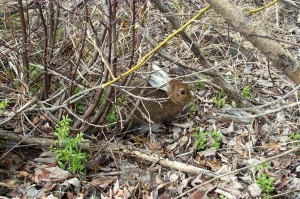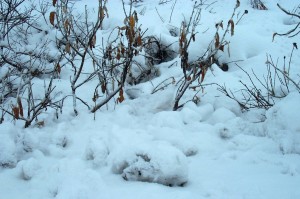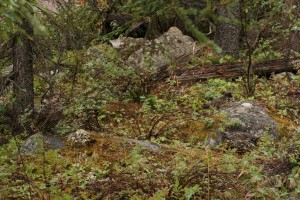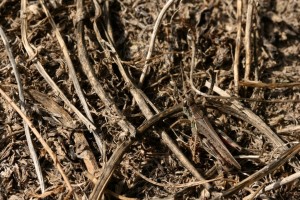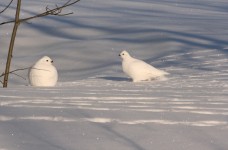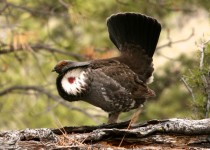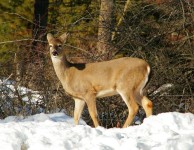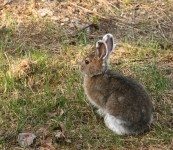I catch a slight movement out of the corner of my eye and stop to scan the brushy slope. After a few seconds I spy a ruffed grouse with its head held high next to a birch tree. If the grouse hadn’t twitched I would have walked right past, like so many other times.
While animals don’t have printed patterns of needles, leaves and grass on them like hunters do, they have various techniques that camouflage them in their habitat.
Ptarmigan, snowshoe hares and some weasels trade in their brown summer coat/plumage for a snow white coat that allows them to go undetected against the snowy winter landscape unless there is a late winter or early spring. Then these white creatures will stand out against the brown landscape like a beacon in the dark.
White-tailed deer also change color with the season but not to the extent of snowshoe hares. During winter, white-tailed deer have a grayish-brown coat to help them blend in with the dead grass and drab colors of the leafless forest. Come summer, their coats will turn a tan to reddish-brown color.
In addition to color, markings help camouflage an animal. White-tailed deer fawns are born tan to reddish-brown like their mothers, but they also have white spots. These spots are highly visible in broad daylight but they mimic the dappled shade of the tall grasses where a fawn waits for its mother.
While a few birds are brightly colored like the red northern cardinal, many more are outfitted in varying shades of brown and tan. With the addition of spots, streaks and stripes, such as on the turkey or brown creeper, they often go undetected except for movement or sound. Brightly colored birds will often molt into drab colors for the winter in order to be camouflaged.
As unlikely as it seems, the bold tan, white and black bands on a killdeer make it virtually impossible to see while it sits on its eggs among stones of similar color. This type of camouflage is considered disruptive coloration because the contrasting colors or markings break up the outline of the animal which makes it harder to see.
Other creatures rely on pure deception to keep them alive, especially insects. These insects, such as praying mantis, look just like the leaves and stems on the plant they rest upon. Some butterflies and moths look exactly like the tree bark on which they rest, lichens included.
Camouflage helps an animal look like the vegetation, soil or rocks where it lives, even if that means underwater. How often have you peered into crystal clear water and seen only rocks? Then the slightest flick of a tail reveals a fish camouflaged against the sunlit rocks. Besides coloring and markings, fish stay camouflaged by countershading–a technique where a creature’s back is dark and the underside is light. The dark, speckled backs of fish help them blend in with the plants and rocks of the bottom when viewed above by fish-hungry herons, hawks, eagles and osprey. Their silvery undersides keep their silhouettes against the surface from becoming too obvious to predatory fish lurking below.
Being camouflage not only helps animals survive by not being eaten, but it also helps predatory animals hunt. Predators need to be as concealed as their prey in order to sneak up on their next meal. No matter how well camouflaged either the prey or predator is, the slightest movement can make the difference between surviving or not.

